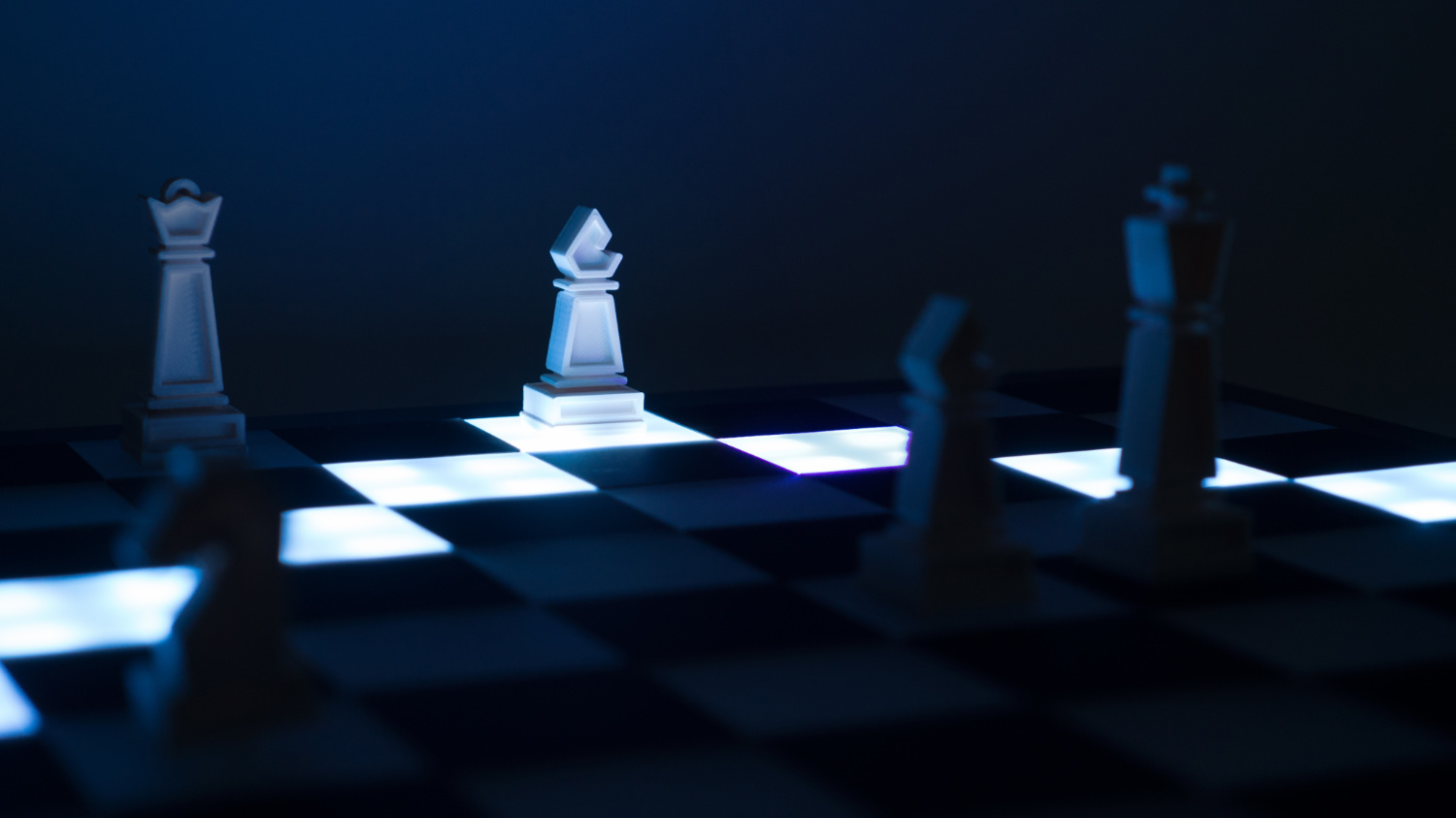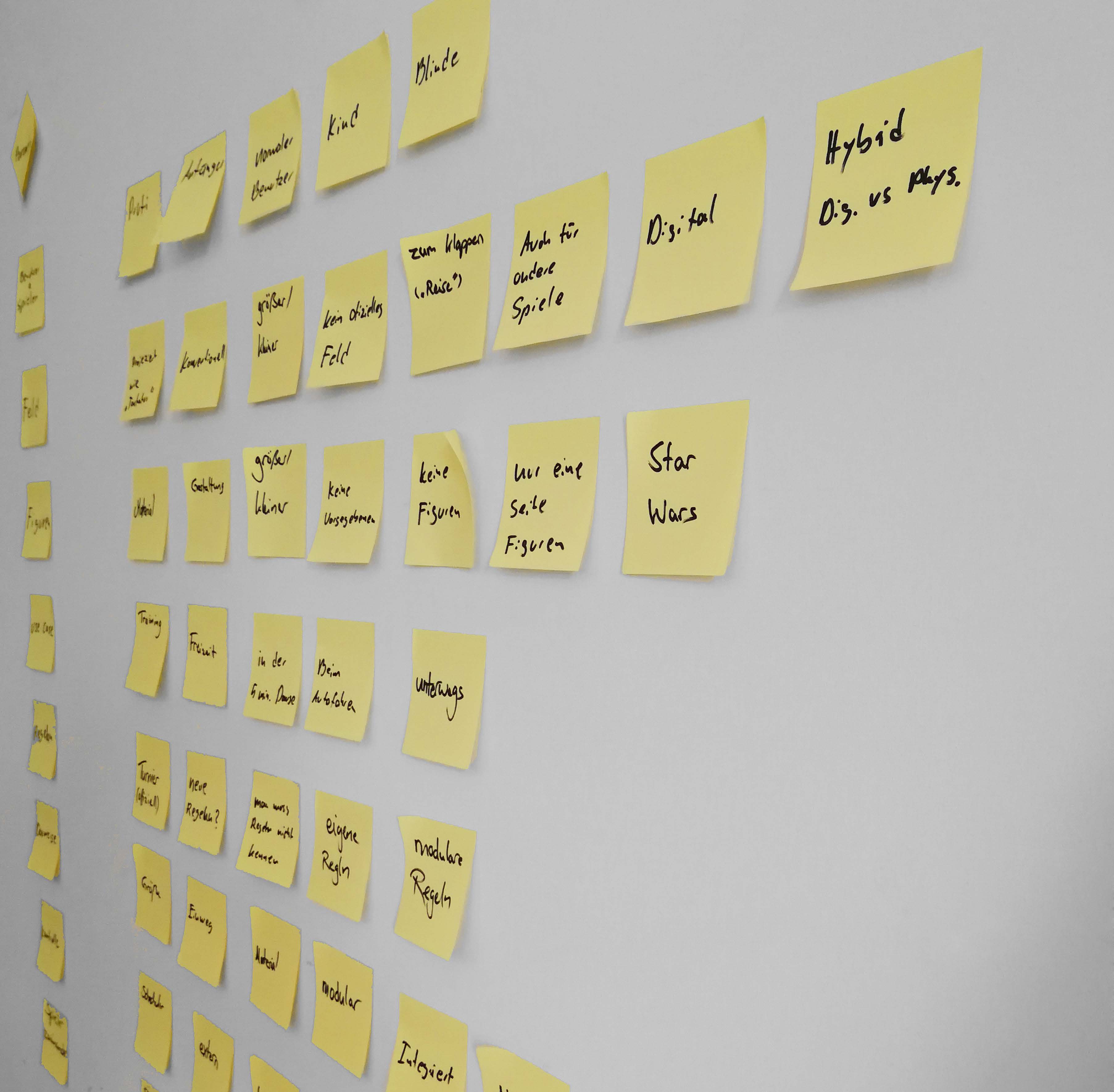sense-chess
chess redesign
A chess system for
improved gameplay of beginners and
for intelligent analysis and training.
The problem of conventional chess is being unenjoyable when players of different skill levels compete against each other. Either it is too easy or too hard.
You cannot learn chess without any additional instruction. But through the intuitive interaction of merely touching a chessman, the player can get helping information through fields lighting up
and indicating possible moves, good moves or better choices in pieces.
While sensing the touch and movement we can provide further information on the gameplay later on and therefor even help improve advanced player's gameplay.
how to learn chess without additional utilities
When playing a game you want to have fun, you want to be good and win. So we decided it is very important to learn chess itself while playing at the physical board.
We focused on new players and their way to learn. Learning by doing, trying and playing over and over again is the common way. So all you have to do to get help is touching a chessman.
First it shows all the possible moves you can do with this chessman. So you get a suggestion on where to put your piece. If you're still holding on and hold back on you're move, a field under a piece which suits your current gameplay best, lights up. Ultimately the best move is shown to you.

Looking like the chessboard at home
Very important is the transferability of the game and its rules from one board to another. That is why the board and the chessmen are looking like common ones and the technology is hidden and invisible. You only see the power cable but there's no need to actually use it.
You can focus on learning and playing chess without any distraction.

how to interact
All you have to do to get help is touching a chessman. We figured out many different methods but this seems to be the most intuitive and simple one for almost every type of user. To improve the product we used the morphological box and other methods.

final construction
Building the chessboard with the goal of keeping it small and maintaining a good form design was a challenge itself. With planning ahead we still managed to fit everything, including the Arduinos underneath and enough space for the LEDs to stray their light, in a convenient size.

sensing
There are many ways of measuring touch. Because of financial reasons and our consideration to have every technology invisible in the board the sensing of a touch to a figure works with a 8x8 grid of home build capacititve sensors out of a thin strip of copper foil under the field, read by an Arduino Mega. Furthermore the pieces needed to be conductive to reduce the gap between sensor and the bodys capacity to just the height of the acrylic glass. That's why we printed them with conductive PLA. We built multiple board and chessmen prototypes and improved everything, especially the sensing in an recurrent redesign.

prototype communication
We split information processing and communication in various parts of the project because of faster prototyping and library usage as well as a more reliable communication via USB between the Arduinos and the server, which is locally executed to not be reliant on any network while prototyping or testing in any situation. One Arduino is just for sensing and sending, the other one is for receiving and highlighting the LEDs. Processing is used to send and receive these signals and reading or writing in the databases, which were mandatory as they were a content in this lecture. The chess logic itself is a library running in JavaScript as well as an chess AI and the chess rules on our NodeJS server, which we all combined to work together.

chessmen
The transferability of the chessmen is very important, especially for beginners to ensure they're learning to play the game not only on this board. So we designed them with common characteristics but still clean and elegant, matching to the design of our chess board and the whole system.

You can have a look at the documentation for further information, visit the projects website or view the code and the chessmen design (icons and 3D models) on GitHub.
context
Made during Prototyping / Redesign
at HfG Schwaebisch Gmuend.
summer 2018, semester 3
Supervised by Prof. Michael Schuster and Benjamin Thomsen.
© Jan Schneider 2019